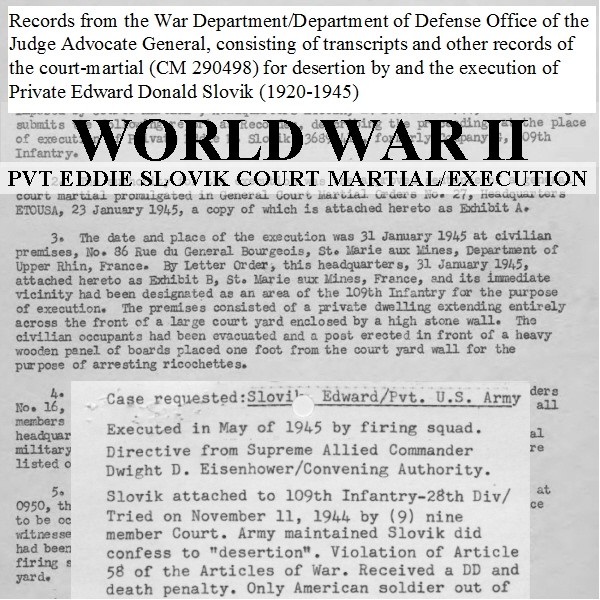
World War II: Eddie Slovik Court Martial and Execution Documents
$19.50
Description
Private Slovik: Timeline and Key Figures
Timeline of Events in the Case of Private Eddie Slovik
- February 1920: Eddie Donald Slovik is born in Detroit, Michigan.
- Mid-1930s: Slovik quits school at age fifteen and repeatedly gets into trouble with the law.
- Late 1930s: Slovik is convicted of embezzlement and sentenced to six months to ten years in prison.
- April 1942: Slovik is released from prison and classified as “4-F” (unfit for military service due to his criminal record) after the United States enters World War II.
- Late 1943: Facing an increased need for manpower, the War Department reclassifies Slovik as “1-A” (available and fit for general military service). He is subsequently inducted into the Army.
- August 1944: After completing basic training at Camp Wolters, Texas, Private Slovik ships out to Europe. He is assigned to the 109th Infantry Regiment, 28th Infantry Division.
- While en route to his unit in Elbeuf, France: Slovik and other replacements are attacked by German forces. Slovik intentionally avoids combat and walks away.
- August 25, 1944: Slovik joins up with a Canadian unit and performs odd jobs, including cooking, for approximately 45 days. This marks the beginning of his first instance of desertion as charged.
- October 4, 1944: Slovik is returned to U.S. military authorities.
- October 7, 1944: Slovik reports back to the 109th Infantry Regiment. He tells his company commander, Captain Ralph O. Grotte, that he is “too scared, too nervous” to serve in a rifle company and would desert again if ordered to fight.
- October 8, 1944: After being ordered to remain in the company area, Slovik asks CPT Grotte if leaving again would be desertion. Upon receiving an affirmative answer, Slovik leaves without his weapon. This marks the beginning of his second instance of desertion as charged.
- October 9, 1944: Slovik surrenders to a nearby U.S. Army unit and hands a cook a signed confession of desertion, stating his intent to desert again if forced into combat. He is returned to the 109th Infantry. His commander advises him to take back and destroy the note, but Slovik refuses and is confined to the division stockade.
- October 19, 1944: Slovik is formally charged with two specifications of desertion in violation of the 58th Article of War, both alleging desertion with intent to shirk hazardous duty and action against the enemy (the 45-day absence and the 1-day absence).
- October 26, 1944: Lieutenant Colonel Henry P. Sommer, the division judge advocate, offers Slovik a deal: if he accepts a combat assignment, he can avoid court-martial. Slovik refuses.
- October 29, 1944: Slovik’s case is referred to trial by general court-martial.
- November 11, 1944: Slovik is tried for desertion. He pleads not guilty and remains silent during the two-hour trial. A nine-member panel finds him guilty and sentences him to death.
- November 1944: Slovik is confined to the Army stockade in Paris, France. Lieutenant Colonel Sommer reviews the trial record and recommends approval of the findings and sentence to Major General Norman “Dutch” Cota.
- November 27, 1944: Major General Norman “Dutch” Cota, the division commander, approves the findings and the death sentence.
- December 1, 1944 – January 6, 1945: Brigadier General E. C. McNeil, the senior Army lawyer in the European Theater, and his staff review Slovik’s case. McNeil concludes that the death penalty appears warranted, noting Slovik’s lack of front-line duty, deliberate plan to secure incarceration, and unfavorable civilian record.
- January 23, 1945: General Dwight D. Eisenhower orders Slovik’s execution by firing squad, to take place in the 109th’s “regimental area.”
- January 31, 1945: Private Eddie D. Slovik is executed by firing squad in France. His death is the only execution of an American soldier for purely military desertion since the Civil War.
- Post-War Years: Slovik’s widow campaigns for his records to be changed to allow her to receive his life insurance policy, but she and her supporters are ultimately unsuccessful.
- Later Years: Historians generally believe that Slovik’s execution was heavily influenced by the ongoing intense fighting (Huertgen Forest and the Battle of the Bulge) and the need to maintain military discipline.
- Undated (1944-1981): Compilation of records related to the court-martial, including Slovik’s confession, affidavits, exhibits, orders, reviews, civilian criminal record, execution details, and correspondence.
- Undated: Publication of William Bradford Huie’s “The Execution of Private Slovik.”
- Undated: Publication of Fred L. Borch III’s “Lore of the Corps – Shot by Firing Squad: The Trial and Execution of Pvt. Eddie Slovik.”
- Undated: Publication of Dr. Jerold E. Brown’s “The Execution of Private Eddie D. Slovik ” in Combined Arms Battle Since 1939.
- Undated: Publication of a “Liberty” magazine issue mentioning the Slovik case.
- Undated (Post-Slovik’s Death): Filing of a petition for a posthumous pardon for Eddie D. Slovik from President Clinton.
Cast of Characters
- Private Edward Donald Slovik (1920-1945): The central figure. An American soldier who deserted twice during World War II, was court-martialed, and became the only American soldier executed for desertion during the war. He had a history of petty crime in his youth and was initially classified as unfit for service.
- Captain (CPT) Ralph O. Grotte: Slovik’s company commander in the 109th Infantry Regiment. Slovik confessed his fear of combat and intention to desert to him.
- Lieutenant Colonel Henry P. Sommer: The division judge advocate for the 28th Infantry Division. He reviewed Slovik’s case, offered him a deal to avoid court-martial (which Slovik refused), and recommended approval of the guilty verdict and death sentence.
- Major General Norman “Dutch” Cota: The commanding general of the 28th Infantry Division. He approved the findings of the court-martial and the death sentence for Private Slovik.
- Brigadier General E. C. McNeil: The senior Army lawyer in the European Theater. He reviewed Slovik’s case and concurred with the recommendation for the death penalty, emphasizing the need for discipline and Slovik’s lack of front-line service.
- General Dwight D. Eisenhower: The Supreme Allied Commander in Europe. He ultimately made the decision to uphold the death sentence and ordered Slovik’s execution by firing squad. His decision was likely influenced by the intense fighting during the Battle of the Bulge and the perceived need to maintain military discipline.
- William Bradford Huie: Author of “The Execution of Private Slovik,” a key source of information about the case.
- Fred L. Borch III: Author of “Lore of the Corps – Shot by Firing Squad: The Trial and Execution of Pvt. Eddie Slovik,” an article published in The Army Lawyer.
- Dr. Jerold E. Brown: Author of “The Execution of Private Eddie D. Slovik,” a chapter in the book “Combined Arms Battle Since 1939.”
- Slovik’s Widow: She campaigned for years after his execution to have his records changed so she could receive his life insurance benefits. Her efforts were ultimately unsuccessful.
World War II: Eddie Slovik Court Martial and Execution Documents
1,776 pages of records from the War Department/Department of Defense Office of the Judge Advocate General, consisting of transcripts and other records of the court-martial (CM 290498) for desertion by and the execution of Private Edward Donald Slovik (1920-1945).
This collection includes a case file of the court-martial of Private Eddie Slovik, and related correspondences, compiled from 1944 to 1981. Arranged in three parts: the case file, correspondence, and a copy of “Liberty” magazine. The records include Slovik’s handwritten confession, affidavits, exhibits, general orders, case reviews, a copy of Slovik’s civilian criminal record from the FBI and reports relating the details of his execution. The collection includes folders of correspondence from individuals commenting on or seeking information about the case. Also included is a copy of “Liberty” magazine mentioning the Slovik case.
Additional Material includes:
Eddie D. Slovik Pardon File – 77 pages of documents related to the estate of Eddie D. Slovik’s petition for a posthumous pardon from President Clinton.
Eddie D. Slovik Official Military Personnel File – 597-page, Official Military Personnel File includes records from the following folders: Service Documents (January 1944-April 1981); Field File/Jacket or Record Book (January 1944-January 1945); Correspondence (June 1944-December 1976); Medical Records (November 1944-January 1945); Disciplinary (November 1944-January 1945); Original Containers (n.d.).
A copy of the 22-page War Department field manual for executions: War Department Pamphlet No. 27-4 Procedure for Military Executions 12 June 1944.
BACKGROUND
During World War II, approximately 40,000 soldiers deserted. Of these, 2,864 were tried by general courts-martial, and 49 death sentences were handed down. Forty-eight of the death sentences were commuted.
“Squad, ready. Aim. FIRE.” With that last command, a party of twelve American Soldiers fired their rifles at an Army private tied to a wooden post. It was 31 January 1945 and Private Eddie D. Slovik, his head covered by a black hood as required by military regulations, was killed. According to William Bradford Huie, author of “The Execution of Private Slovik,” his death by firing squad in France was the only execution of an American for a purely military offense since the Civil War.
From the end of the American Civil War until World War II, no American soldier was executed for cowardice or desertion, even during wartime. This period included twenty-five years of conflict on the frontier with American Indians, the Spanish-American War, the Philippine-American War, World War I, and a number of interventions and expeditions in Latin America. Until World War II, the U.S. Army punished deserters with imprisonment, fines, loss of pay and benefits, and dishonorable discharge.
Slovik was born in Detroit, Michigan in February 1920. He grew up in a poor home environment. Slovik quit school at the age of fifteen and was repeatedly in trouble with the law. In the late 1930s, Slovik was convicted of embezzlement and sentenced to six months to ten years in prison.
Slovik was still incarcerated when the United States entered World War II and, when he was released in April 1942 he was given the classification “4-F” as an ex-convict. This meant he had initially escaped the draft, as the Army had sufficient manpower and did not need to draft convicted felons. In late 1943, however, facing an increased need for able-bodied young men, the War Department reclassified Slovik as “I-A” defining him as available and fit for general military service. Slovik was soon after inducted into the Army.
After completing basic training at Camp Wolters, Texas, PVT Slovik shipped out to Europe in August 1944. Assigned to the 109th Infantry Regiment, a part of the Pennsylvania National Guard 28th Infantry Division, Slovik and other replacements were on their way to their unit in Elbeuf, France, when they were attacked by German forces. Slovik intentionally avoided combat and walked away. He then joined up with a Canadian unit and did odd jobs, including cooking, for the next forty-five days. Slovik was returned to U.S. authorities on 4 October 1944 and reported back to the 109th Infantry three days later.
When questioned by his company commander, Captain (CPT) Ralph O. Grotte, about this absence, Slovik told Grotte that he was “too scared, too nervous” to serve with a rifle company and would desert again if ordered to fight (William B. Huie, The Execution of Private Slovik (1970) supra note 1, at page 127).
Slovik was then ordered to remain in the company area. Shortly thereafter, he returned to CPT Grotte and asked: “If I leave now, will it be desertion?” When Grotte said yes, Slovik left without his weapon. The next day, PVT Slovik surrendered to a nearby unit and handed a cook a signed, hand-printed note that said, in part: “I Pvt. Eddie D. Slovik confess to the Desertion of the United States Army. . . . I told my commanding officer my story. I said that if I had to go out their again Id run away. He said there was nothing he could do for me so I ran away again AND ILL RUN AWAY AGAIN IF I HAVE TO GO OUT THEIR,” (Id. at 128).
After being returned to the 109th Infantry on 9 October, Slovik’s commander told him that the written note was damaging to his case and that he should take it back and destroy it. Slovik refused and was confined to the division stockade.
On 19 October, Slovik was charged with two specifications of desertion, in violation of the 58th Article of War. Both specifications alleged that he deserted “with intent to shirk hazardous duty and shirk important action, to wit: action against the enemy” on two different occasions: his forty-five day desertion from 25 August to 4 October 1944 and his one-day desertion from 8 to 9 October 1944.
On 26 October, Lieutenant Colonel Henry P. Sommer, the division judge advocate, offered Slovik a deal: if he would go into the line, that is, accept a combat assignment, he could escape court-martial. Slovik refused this offer and on 29 October his case was referred to trial by general court-martial.
On 11 November 1944, Slovik was tried for desertion. He pleaded not guilty and elected to remain silent. At the end of a two-hour trial, a nine-member panel found Slovik guilty and sentenced him to death. After Slovik was confined to the Army stockade in Paris, France, Sommer reviewed the record of trial. He recommended to Major General Norman “Dutch” Cota, the division commander, that the findings and sentence be approved. Cota approved the findings and sentence on 27 November.
From 1 December 1944 to 6 January 1945, Brigadier General E. C. McNeil, the senior Army lawyer in the European Theater, and lawyers on McNeil’s staff, reviewed Slovik’s case. McNeil wrote: “This is the first death sentence for desertion which has reached me for examination. It is probably the first of its kind in the American Army for over eighty years; there were none in World War I. In this case, the extreme penalty of death appears warranted. This soldier had performed no front-line duty. He deserted from his group of about fifteen when about to join the infantry company to which he had been assigned. His subsequent conduct shows a deliberate plan to secure trial and incarceration in a safe place. The sentence adjudged was more severe than he anticipated, but the imposition of a less severe sentence would only have accomplished the accused’s purpose in securing his incarceration and consequent freedom from the dangers which so many of our armed forces are required to face daily. His unfavorable civilian record indicates that he is not a worthy subject of clemency.”
On 23 January 1945, General Eisenhower ordered Slovik’s execution by firing squad and directed that the shooting occur in the 109th’s “regimental area.” It should be noted that General Eisenhower did not simply decline to intervene in the Slovik case.
While 142 American Soldiers were executed for murder and/or rape during World War II, Slovik’s was the only execution for desertion in the face of the enemy.
In the years after Slovik’s death, his widow campaigned relentlessly for his records to be changed so that she could receive the proceeds of his $10,000 life insurance policy. While many were sympathetic, she and her supporters were unsuccessful. Today, most historians believe that Slovik might have escaped a firing squad had his timing been better. However, the 28th Infantry Division was engaged in bloody fighting in Huertgen Forest at the time of his trial, and the court-martial panel was in no mood for leniency. Additionally, when Eisenhower acted on Slovik’s case, the Battle of the Bulge was raging, and American forces were in serious trouble in the face of a German surprise offensive. Eisenhower likely saw that any value of leniency was outweighed by the view that maintaining discipline in the face of the enemy required that Slovik be executed.
Sources:
“Lore of the Corps – Shot by Firing Squad: The Trial and Execution of Pvt. Eddie Slovik” by Fred L. Borch III, The Army Lawyer May 2010
“The Execution of Private Eddie D. Slovik “by Dr. Jerold E. Brown, Combined Arms Battle Since 1939 (1992)
William Bradford Huie, “The Execution of Private Slovik” (1970)
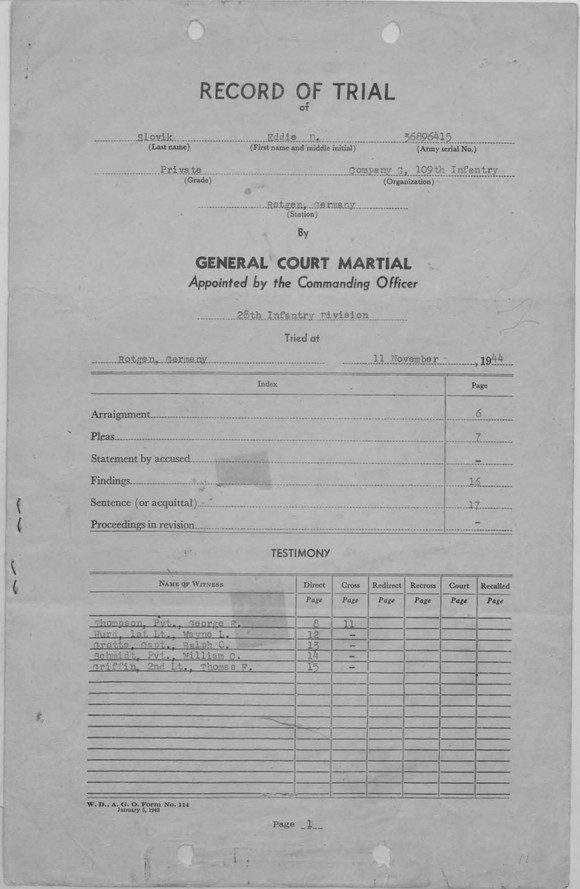

Related products
-
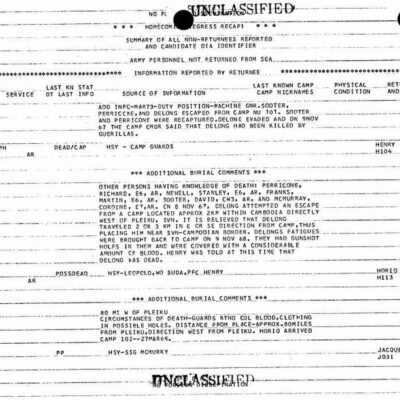
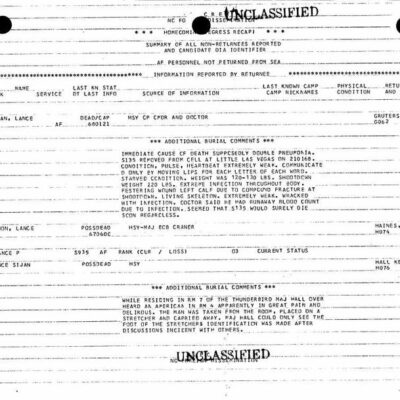
Vietnam War: POW/MIA Summary of All Reported Non-Returnees
$19.50 Add to Cart -
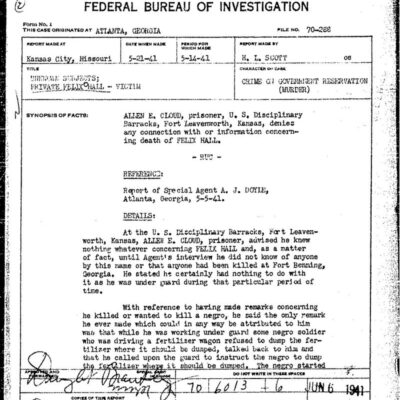
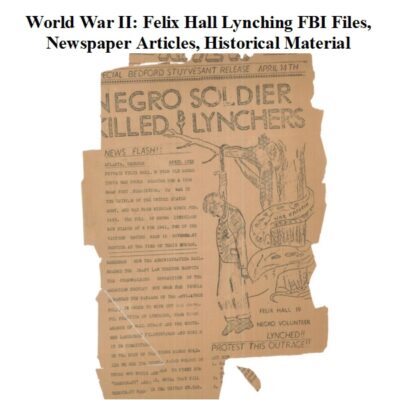
World War II: Felix Hall Lynching – FBI Files, Articles, Historical Records
$9.99 Add to Cart -
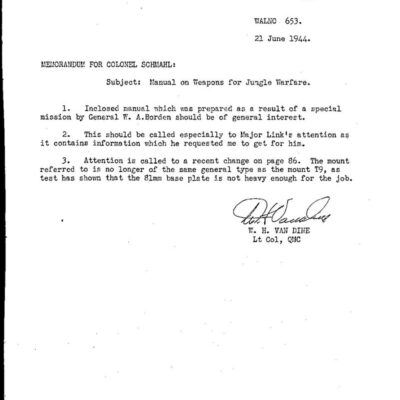
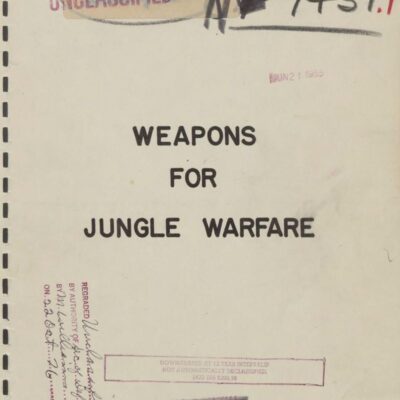
World War II Manual on Weapons for Jungle Warfare (1944)
$1.99 Add to Cart -
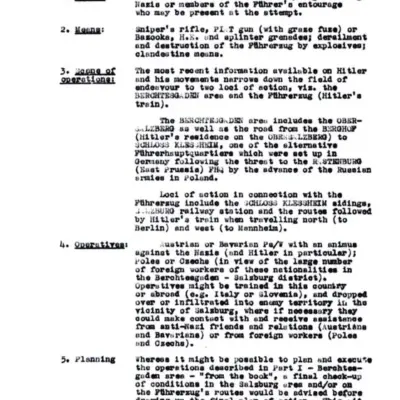
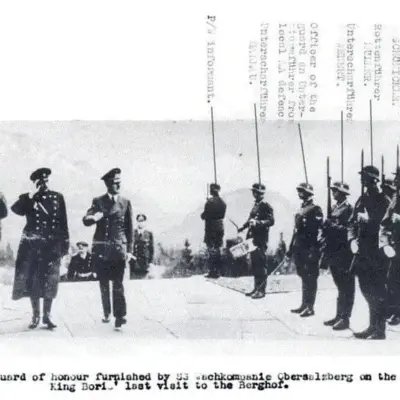
World War II: Adolf Hitler and Operation Foxley – British Assassination Plot
$19.50 Add to Cart